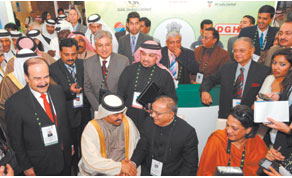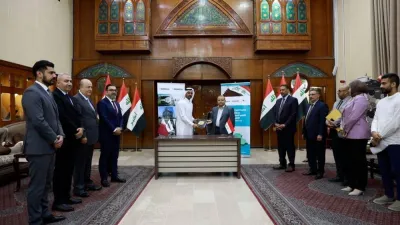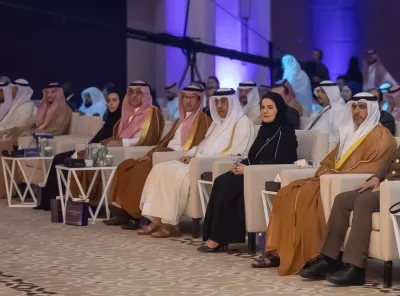 |
| HE the Minister of Energy and Industry, Dr Mohamed bin Saleh al-Sada being greeted at the Indian Pavilion by the country’s Federal Minister for Petroleum and Natural Gas, S Jaipal Reddy and Indian ambassador Deepa Gopalan Wadhwa |
Fast growing India is eyeing long-term supply of liquefied natural gas (LNG) from producers, especially Qatar to meet its growing demand and has highlighted the tremendous investment opportunities in the Indian oil and gas sector.
New Delhi is exploring possibilities in shale gas and gas hydrates, India’s Federal Minister of Petroleum and Natural Gas S Jaipal Reddy told a ministerial conference at the 20th World Petroleum Congress (WPC).
Highlighting Qatar as one of its long-term LNG suppliers, he said: “We are keen to have more such relationships and our companies are also looking for investment opportunities in LNG plants in producer nations.”
Petronet LNG, which at present imports 7.5mn tonnes a year of LNG from Qatar under a long-term contract, has sought an additional 2-3mn tonnes while state gas utility GAIL India wanted 1mn tonne for 20-25 years, according to reports.
Reddy was confident that India’s crude oil production would reach more than 38mn tonnes in 2011-12. The production of natural gas for 2011-12 is projected at 51.68bn cubic metres (bcm).
The balance recoverable reserves from the known oil and gas reservoirs were about 2,041mn tonnes. The incremental oil production in recent years was largely from Barmer fields in Rajasthan, and in case of gas, it was from Krishna Godavari Basin, he said.
Stressing that Indian government had adopted a transparent and level playing field to attract foreign investments; Reddy said 100% foreign direct investment was permitted in exploration and production as the objective was to increase the extent of area explored to 100% by 2015 from the present level of 65%.
In order to extent the area covered, India has so far held nine bid rounds. An investment of $16.5bn has been made in exploration and production activities.
New Delhi has launched the ninth edition of New Exploration Licensing Policy (NELP) to auction oil and gas block. The government had offered 34 blocks – eight deepsea blocks, seven shallow water areas and 19 onland blocks, for bidding in NELP-IX last year. Of these, bids were received for 33 blocks by the last date on March 28 this year.
The government had in the previous eight rounds awarded 235 areas for exploration and production of oil and gas.
“The process of award exploration blocks of 9th bid round will be concluded in the near future,” he said, adding more than two dozen foreign companies were working in exploration and production sector, which included global majors.
“Our hydrocarbon sector offers immense opportunities for investments and reaping benefits. The liberal and investor-friendly policies, a developing economy with a fast growing energy market have made many companies take notice of the potential,” he said.
The investor-friendly policies of government have been able to attract significant investments in the petroleum sector, he said.
In the last one year, two major investment decisions made by major company’s — BP and Vedanta in blocks held by Reliance Industries and Cairn respectively — have re-established faith in the hydrocarbon potential in India, Reddy said.
On the refinery sector, Reddy said the installed capacity, which was at 62mn tonnes in 1998, has increased to 193mn tonnes in 2011. “This will be further increased to 232mn tonnes by 2012,” he added.
This has enabled India to become an exporter of petroleum products to the tune of 59mn tonnes valued at $43bn, he said, adding Indian refineries have invested $7bn in the last four years in processes to produce greener fuels with lower emissions.
Highlighting that Indian companies are present in 20 countries, he said ONG Videsh has produced about 9mn tonnes of oil and gas from its overseas assets.



